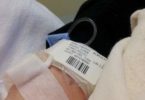What's in this article?
Cyclospora overview
Cyclospora are single-celled parasites that mostly live in tropical environments. It has two life stages: One is an active organism, and the other is a dormant stage called an oocyst. When people swallow the oocyst, they become active in the body, causing uncomfortable gastrointestinal symptoms.
Symptoms of cyclospora
Some people infected with the microscopic parasite that causes cyclospora infection develop no signs or symptoms. For others, signs and symptoms which usually begin within two to 11 days of eating contaminated food or drinking contaminated water may include:
- Frequent, watery diarrhea
- Bouts of diarrhea alternating with bouts of constipation
- Loss of appetite and weight loss
- Bloating, flatulence and burping
- Stomach cramps
- Nausea and vomiting
- Muscle aches
- Fever
- Fatigue- this symptom may last long after the active infection has gotten better
- General feeling of unwellness (malaise)
The diarrhea may end by itself within a few days, or it may last for weeks. If you have HIV or another condition that compromises your immune system, the infection can last for months if not treated.
Cyclospora Infection Causes and Risk Factors
Cyclospora infection (cyclosporiasis) is caused by a parasite that infects human small intestinal tract cells. The parasite is named Cyclospora cayetanensis; it’s a single-cell parasite that can only be viewed with a microscope. The parasite was recently discovered in 1977 and only named in 1994. The parasite has a complicated life cycle that requires development in human intestinal cells. Sporulated oocysts are the infective stage of the parasite. Sporozoites infect small intestinal cells after oocysts spore breaks open, a process termed excystation that is followed by several developmental steps). After development, non-sporulated oocysts passed out of the body in feces must mature (sporulate) in the environment before they can infect another human.
Anyone at any age is at risk of getting cyclosporiasis if they ingest water or foods contaminated with sporulated oocysts. Most individuals infected live in tropical or subtropical regions. Most of the U.S. outbreaks have been relatively small and linked to imported fresh produce (raspberries, snow peas, basil, and lettuce) but not to frozen or canned produce. A large outbreak in 2013 was linked to imported salad mix and cilantro. This large outbreak involved 25 states, primarily Iowa, Nebraska, and Texas.
What kinds of foods are usually affected?
Outbreaks in the United States are typically associated with fresh fruits and vegetables, according to the CDC. Fresh raspberries imported from Guatemala sickened more than 1,000 people in 20 states in 1996.
Cyclospora Complications
The prolonged diarrhea of untreated cyclospora infection can cause dehydration. If you’re an otherwise healthy adult, you can treat dehydration by drinking more fluids. Some people may need to be hospitalized to receive intravenous fluids because they’re at higher risk of severe dehydration. Examples include:
- People with other serious illnesses
- Infants and young children
- Older adults
Cyclospora Infection Treatment
Diagnosis is important because for this parasite only one combination drug is the treatment of choice, trimethoprim-sulfamethoxazole 160/800, oral tablet, twice a day for seven to 10 days. Some immunocompromised patients may require longer treatment. If an individual is allergic to this drug, alternative antibiotics may be successful. However, these people should be evaluated by an allergist, or an infectious-disease expert.





